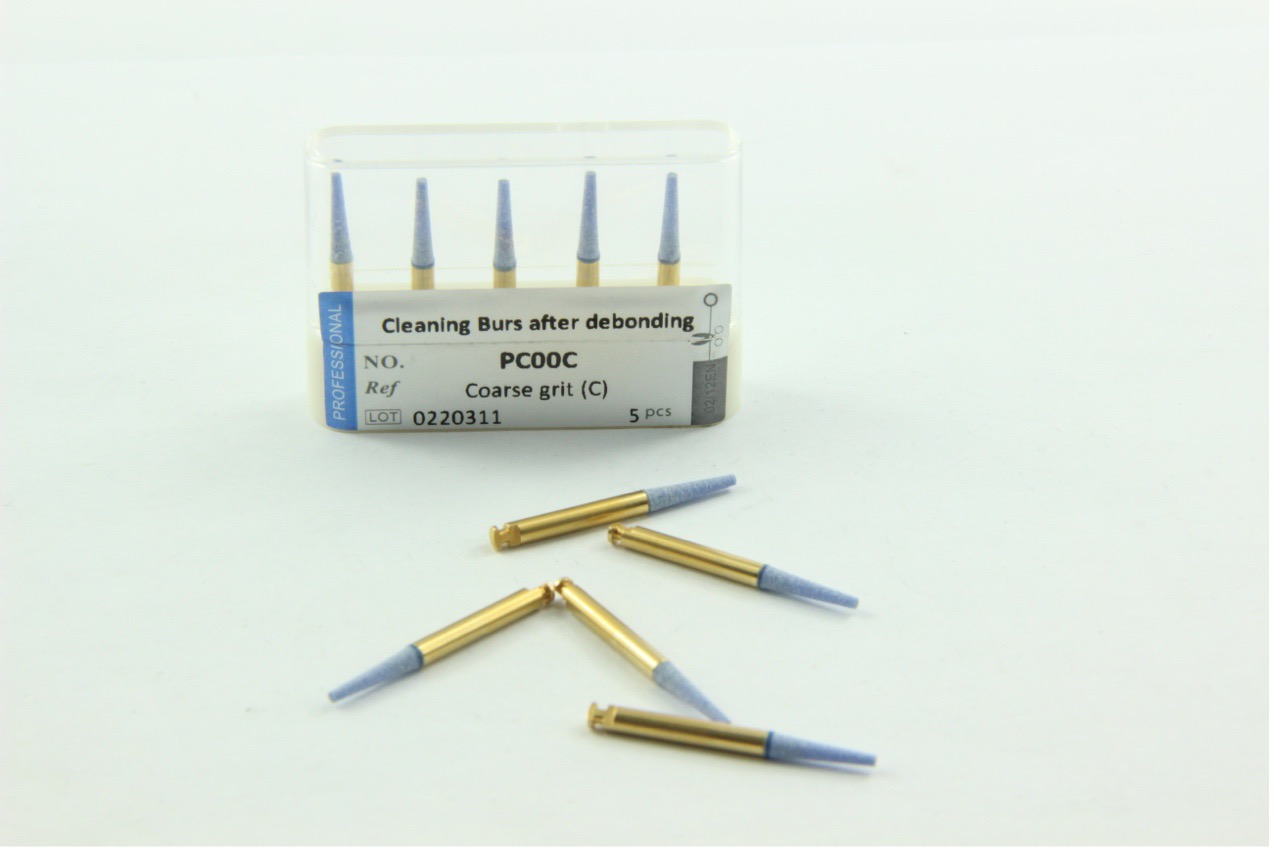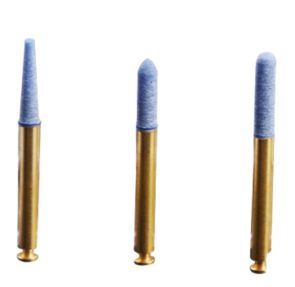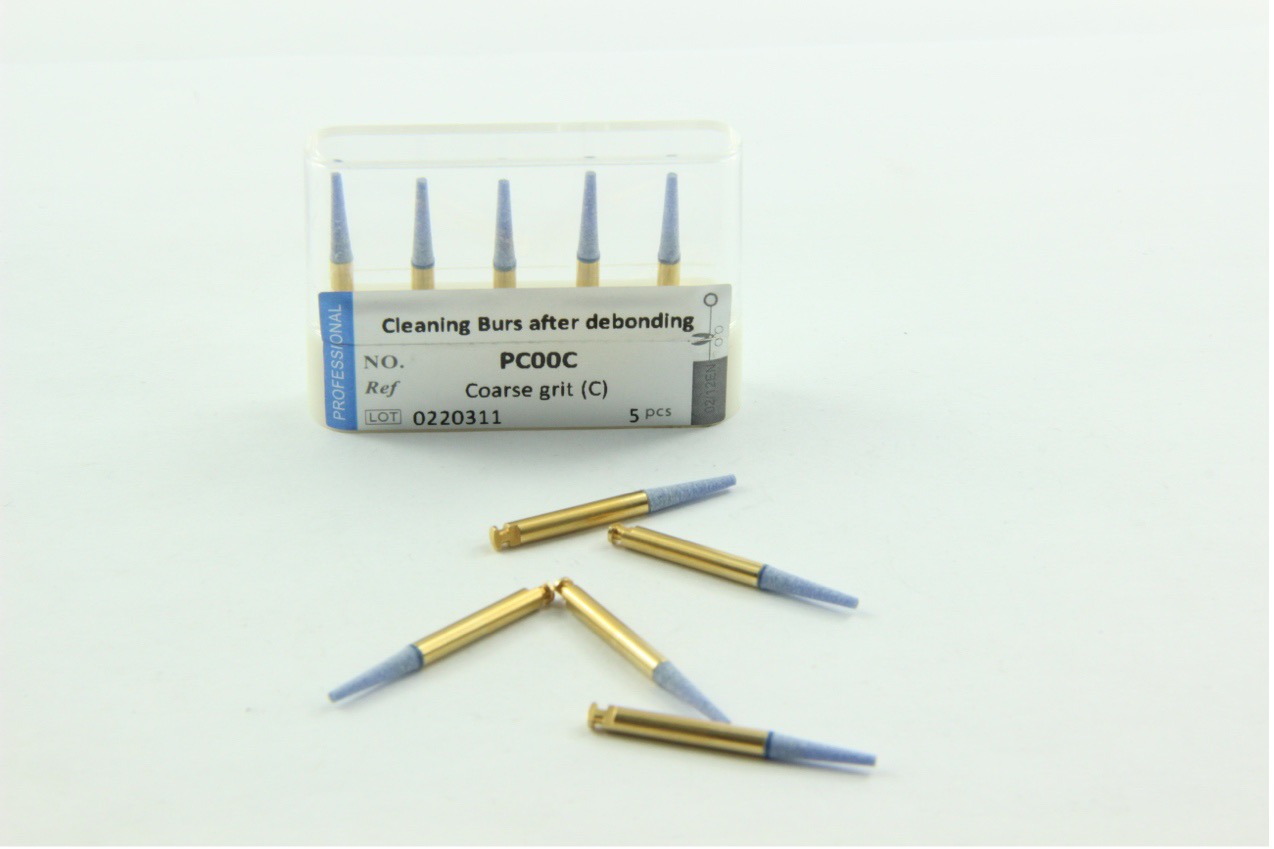Cleaning burs after debonding is a tool used to remove the remaining adhesive material and clean the surface of the tooth. It is also used for cleaning and trimming restorative material after the removal of orthodontic brackets. In the following paragraphs, we will discuss the importance of cleaning burs after debonding and how to use cleaning burs after debonding effectively.
One of the primary functions for cleaning burs after debonding is to remove any remaining adhesive material after the removal of orthodontic brackets. After the removal of orthodontic brackets, some adhesive material may remain on the tooth surface. This material can be challenging to remove manually, so cleaning burs after debonding are often used to clean the surface effectively.
In addition to removing adhesive material, cleaning burs after debonding is also crucial for maintaining dental hygiene. The surface of the tooth can accumulate bacteria and plaque over time, which can lead to tooth decay and gum disease. By using cleaning burs after debonding to clean the surface of the tooth after debonding, you can prevent the buildup of bacteria and plaque and maintain optimal dental hygiene.

To use cleaning burs after debonding effectively, you should follow these steps:
1. Select the appropriate bur size and shape
The bur size and shape should be carefully selected based on the size and shape of the tooth surface and the remaining adhesive material. For example, a larger tooth may require a larger bur, while a smaller tooth may require a smaller bur. If the adhesive material is located in a tight space, a smaller bur may be necessary to effectively remove it. A bur that is too large or too small can be ineffective or cause damage to the enamel.

2. Ensure that the bur is securely fastened to the handpiece
The bur should be securely fastened to the handpiece to prevent any accidental dislodging during use, which can cause damage to the tooth or surrounding tissue.
3. Gently apply the bur to the tooth surface instead of applying too much pressure
The bur should be applied gently to the tooth surface, taking care not to apply too much pressure. Applying too much pressure can cause damage to the enamel and surrounding tissue.
4. Move the bur in a circular motion
The bur should be moved in a circular motion to gradually remove the adhesive material from the tooth surface. This technique helps to prevent damage to the enamel and surrounding tissue.
5. Periodically rinse the tooth surface and the bur
It's important to periodically rinse the tooth surface and the bur to remove any debris that may have accumulated during use. This helps to maintain optimal hygiene and prevent the spread of bacteria.
6. Repeat the process until all the adhesive material is removed
The process of using the bur to remove adhesive material should be repeated until all the adhesive material has been removed from the tooth surface. This ensures that the tooth surface is clean and free of any remaining adhesive material.
7. Use a gentle cleaning agent and a soft-bristled toothbrush to clean the tooth surface
After removing the adhesive material with the bur, a gentle cleaning agent and a soft-bristled toothbrush should be used to clean the tooth surface. This helps to remove any remaining debris and maintain optimal dental hygiene.
8. Rinse the tooth surface thoroughly with water to remove any remaining debris
Finally, the tooth surface should be rinsed thoroughly with water to remove any remaining debris. This step ensures that the tooth surface is clean and free of any debris that may have accumulated during the cleaning process.
By following these steps, you can effectively use cleaning burs after debonding to remove any remaining adhesive material without causing damage to the enamel or surrounding tissue. It's important to use a gentle touch and the appropriate technique to maintain optimal dental hygiene and enamel preservation.



